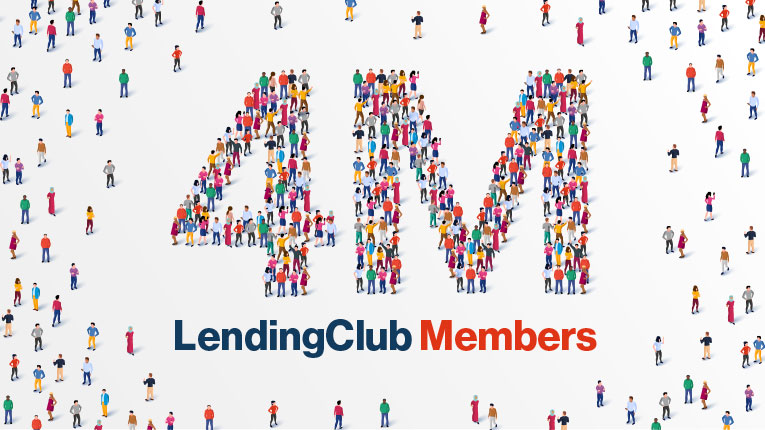3 Ways Marketplace Loans Are Different from Alternative Lending Products

By Armen Meyer, Vice President for Regulatory Strategy and Public Policy at LendingClub
Consumer spending comprises two-thirds of the U.S. economy. 1Put another way, as consumer health goes, so goes the nation’s health. Given that context, and as alternative lending continues to make inroads into the personal loan industry, it’s important to distinguish between marketplace loan providers and the broader range of alternative lenders.
In theory, consumers looking for credit have a range of options. In reality, multiple studies find consumer demand for credit routinely outstrips supply. According to one regulator, “the vast majority of American consumers reliably pay their debt obligations, yet less than half of Americans consistently qualify for prime credit.”1 This is true across different economic cycles, and according to a study from researchers at the Philadelphia Fed, particularly in underserved areas. On top of that, many of the sources consumers turn to for credit are unreliable, difficult to understand, expensive, and sometimes, downright harmful. For example, as the CFPB noted in its 2013 whitepaper on Payday Loans and Deposit Advance Products, “it is unclear whether consumers understand the costs, benefits, and risks of using these products.”
But marketplace loan providers are changing the game. Critically, as the number of traditional lenders has dwindled, “marketplace lenders have tended to expand credit in areas where bank branches have been on the decline.” 34 Below I outline three key distinctions between marketplace loan providers and other types of alternative lenders.
1. Marketplace loan platforms enable consumers to access more responsible credit options at lower prices.
Marketplace loans fill a critical gap by widening consumer access to affordable credit. 5Unlike some types of alternative credit providers that offer installment loans with difficult-to-understand terms and extremely high APRs, marketplace loan providers offer products that are more transparent and, in many cases less expensive than other types of credit offerings. In fact, marketplace lenders enable consumers to borrow at APRs that are significantly, and for some products, orders of magnitude, lower than what they can obtain through traditional lenders. They do this through:
Cultivating a wide range of loan buyers, which in turn allows them to fund a broad spectrum of borrowers; and
Superior technology, combined with the use of additional data not captured in FICO scores, enables more efficient risk assessment. 6
These practices, plus innovations such as matching funding from institutional investors with consumer demand for credit through two-way marketplaces, have beneficial impacts on consumer health, including potentially reducing financial hardship. Studies have found they also expand underserved populations’ access to credit and economic opportunities.
2. Marketplace loans compare favorably to traditional credit products.
Marketplace loan providers not only offer potentially less expensive credit options, they also promote a superior product. Credit marketplaces use technology to remove friction from the loan application process, providing a relatively seamless online experience, and speedy decisioning on loan approvals. Because brick-and-mortar branches do not limit their range, they can reach consumers in multiple geographies, while offering them products that are likely to be much more affordable.
Additionally, members of the Marketplace Lending Association (MLA), the online lending industry’s professional trade group of which LendingClub is a co-founder, agree to practice and promote customer-friendly conduct including:
Disclosing loan terms to consumers upfront, in plain English;
Facilitating loans that have fixed APRs capped at 36%;
Facilitating loans with fixed installments, fixed interest rates, longer terms, and affordable monthly payments.
Contrast this with some other types of online lenders whose products often pose risks to consumers’ financial health, including increasing the probability that they become trapped in a cycle of indebtedness. And that’s not to mention payday lenders, who may also charge steep balloon payments on short-term loans, in addition to offering expensive products.
3. Marketplace loan platforms are well-regulated with significant federal and other oversight.
Marketplace loan platforms and the products they facilitate are subject to the same lending standards that other consumer loans (and lenders) are. That means they attract significant oversight from a wide array of federal and consumer protection regulators. Additionally, through their partnerships with banks, where banks handle underwriting and originations for the loans marketplace platforms facilitate, platforms must conform to the standards put in place by the relevant supervisory and regulatory authorities, including fair lending laws enforced by the FDIC "to the same extent as if the activities were handled within the institution itself.” 7 They also must meet banks’ compliance standards.
With the plethora of alternative lenders offering products to consumers, these distinctions among different types of lenders matter. We and other marketplace loan providers have made clear that we consider consumer protection our highest priority.
References:
1. Federal Reserve Bank of St. Louis, https://www.stlouisfed.org/publications/regional-economist/january-2012/dont-expect-consumer-spending-to-be-the-engine-of-economic-growth-it-once-was.
2. Federal Deposit Insurance Corporation, Request for Information on Small-Dollar Lending, Center for American Services Innovation, 2016 Financially Underserved Market Study, November 2016, FDIC National Survey of Unbanked and Underbanked Households October 2018
3. Federal Reserve Bank of Philadelphia, Julapa Jagtiani and Catherine Lemieux,“Do Fintech Lenders Penetrate Areas That Are Underserved by Traditional Banks?” Working Paper 18-13, March 2018.
4. Federal Reserve Bank of Philadelphia, Julapa Jagtiani and Catherine Lemieux, “Fintech Lending: Financial Inclusion, Risk Pricing, and Alternative Information, “Federal Reserve Bank of Philadelphia Working Paper 17-17, at 9-12, July 6, 2017.
5. Julapa Jagtiani and Catharine Lemieux, Do Fintech Lenders Penetrate Areas That Are Underserved by Traditional Banks? Working Paper 18-13, March 2018. And Di Lorenzo, Vincent, St. John’s University, “FinTech Lending: A Study of Expectations versus Market Outcomes,” September 2018.
6. Hughes, Joseph P., Jagtiani, Julapa, and Moo, Choon-Geol,“Consumer Lending Efficiency: Commercial Banks Versus Fintech Lenders,” October 2018.
7. FDIC, “Examination Guidance for Third-Party Lending,” July 29, 2016.
You May Also Like










